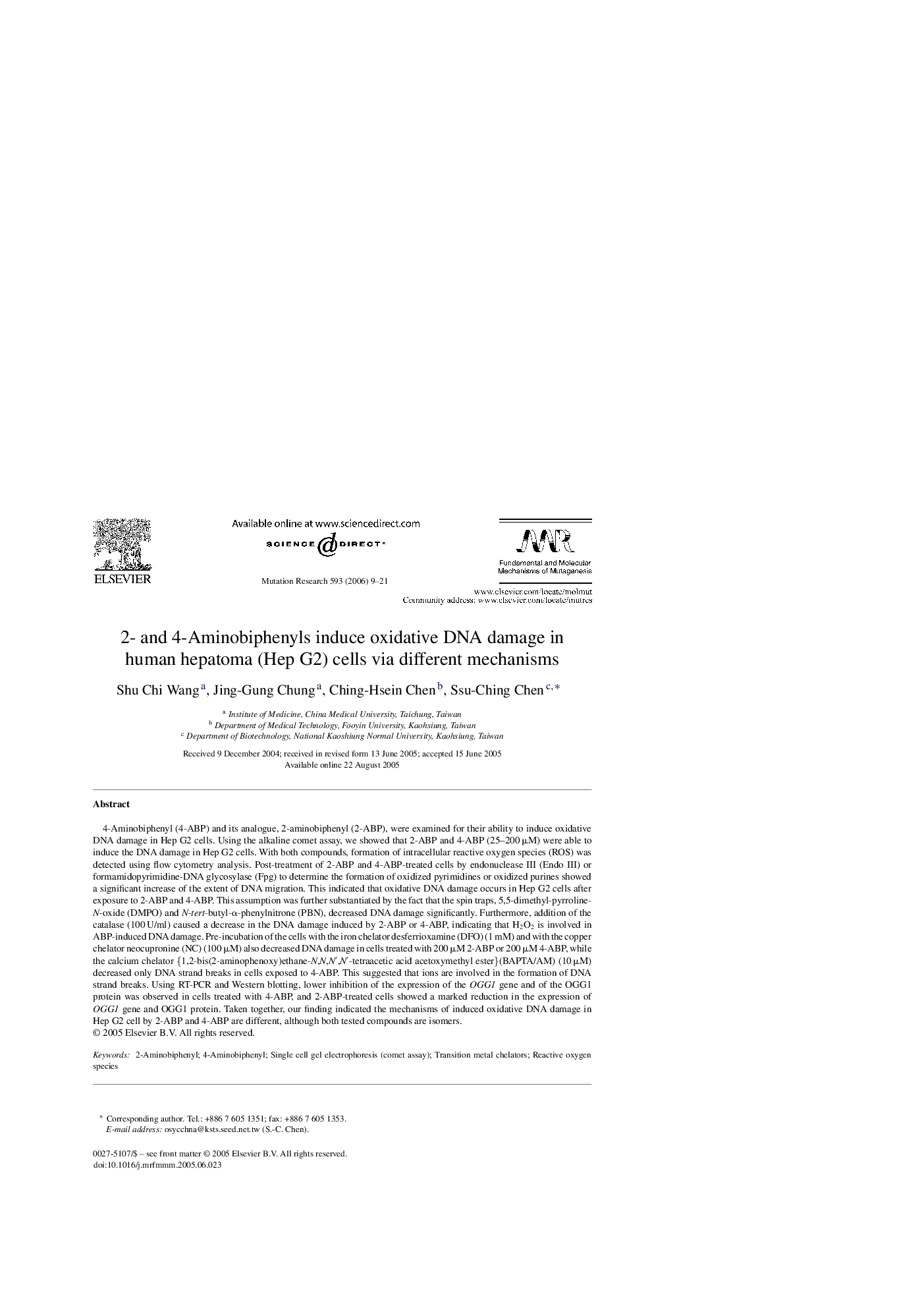| کد مقاله | کد نشریه | سال انتشار | مقاله انگلیسی | نسخه تمام متن |
|---|---|---|---|---|
| 2147716 | 1548425 | 2006 | 13 صفحه PDF | دانلود رایگان |
عنوان انگلیسی مقاله ISI
2- and 4-Aminobiphenyls induce oxidative DNA damage in human hepatoma (Hep G2) cells via different mechanisms
دانلود مقاله + سفارش ترجمه
دانلود مقاله ISI انگلیسی
رایگان برای ایرانیان
کلمات کلیدی
موضوعات مرتبط
علوم زیستی و بیوفناوری
بیوشیمی، ژنتیک و زیست شناسی مولکولی
تحقیقات سرطان
پیش نمایش صفحه اول مقاله

چکیده انگلیسی
4-Aminobiphenyl (4-ABP) and its analogue, 2-aminobiphenyl (2-ABP), were examined for their ability to induce oxidative DNA damage in Hep G2 cells. Using the alkaline comet assay, we showed that 2-ABP and 4-ABP (25-200 μM) were able to induce the DNA damage in Hep G2 cells. With both compounds, formation of intracellular reactive oxygen species (ROS) was detected using flow cytometry analysis. Post-treatment of 2-ABP and 4-ABP-treated cells by endonuclease III (Endo III) or formamidopyrimidine-DNA glycosylase (Fpg) to determine the formation of oxidized pyrimidines or oxidized purines showed a significant increase of the extent of DNA migration. This indicated that oxidative DNA damage occurs in Hep G2 cells after exposure to 2-ABP and 4-ABP. This assumption was further substantiated by the fact that the spin traps, 5,5-dimethyl-pyrroline-N-oxide (DMPO) and N-tert-butyl-α-phenylnitrone (PBN), decreased DNA damage significantly. Furthermore, addition of the catalase (100 U/ml) caused a decrease in the DNA damage induced by 2-ABP or 4-ABP, indicating that H2O2 is involved in ABP-induced DNA damage. Pre-incubation of the cells with the iron chelator desferrioxamine (DFO) (1 mM) and with the copper chelator neocupronine (NC) (100 μM) also decreased DNA damage in cells treated with 200 μM 2-ABP or 200 μM 4-ABP, while the calcium chelator {1,2-bis(2-aminophenoxy)ethane-N,N,Nâ²,Nâ²-tetraacetic acid acetoxymethyl ester}(BAPTA/AM) (10 μM) decreased only DNA strand breaks in cells exposed to 4-ABP. This suggested that ions are involved in the formation of DNA strand breaks. Using RT-PCR and Western blotting, lower inhibition of the expression of the OGG1 gene and of the OGG1 protein was observed in cells treated with 4-ABP, and 2-ABP-treated cells showed a marked reduction in the expression of OGG1 gene and OGG1 protein. Taken together, our finding indicated the mechanisms of induced oxidative DNA damage in Hep G2 cell by 2-ABP and 4-ABP are different, although both tested compounds are isomers.
ناشر
Database: Elsevier - ScienceDirect (ساینس دایرکت)
Journal: Mutation Research/Fundamental and Molecular Mechanisms of Mutagenesis - Volume 593, Issues 1â2, 29 January 2006, Pages 9-21
Journal: Mutation Research/Fundamental and Molecular Mechanisms of Mutagenesis - Volume 593, Issues 1â2, 29 January 2006, Pages 9-21
نویسندگان
Shu Chi Wang, Jing-Gung Chung, Ching-Hsein Chen, Ssu-Ching Chen,